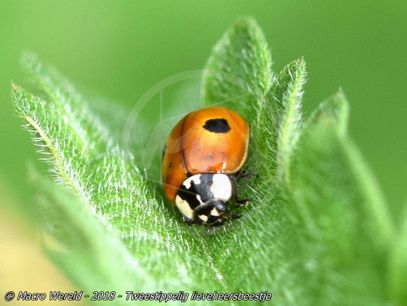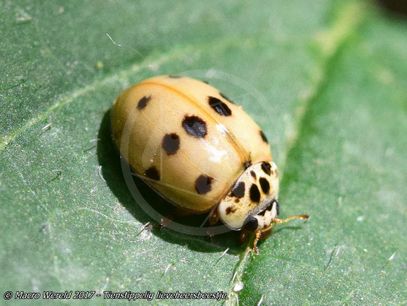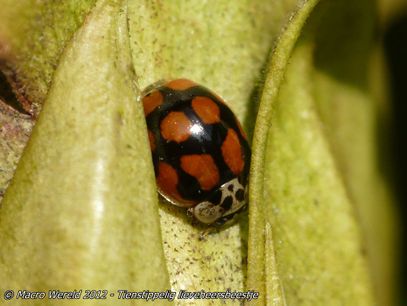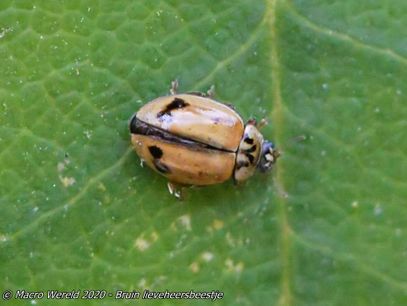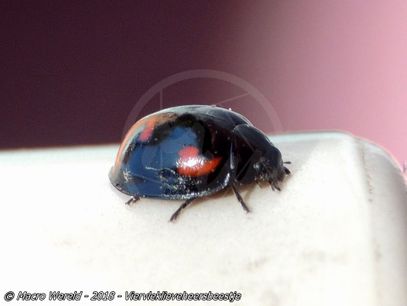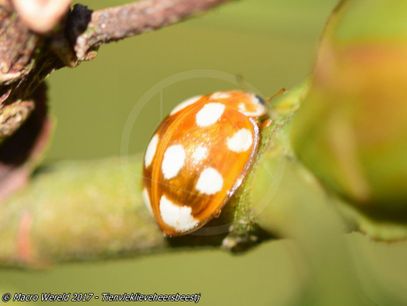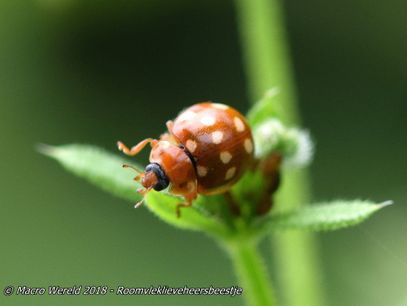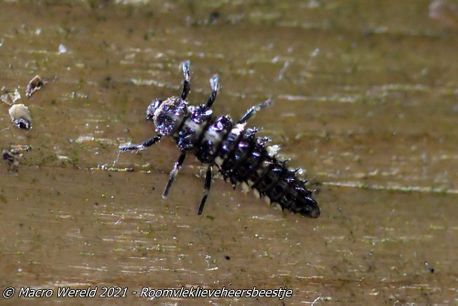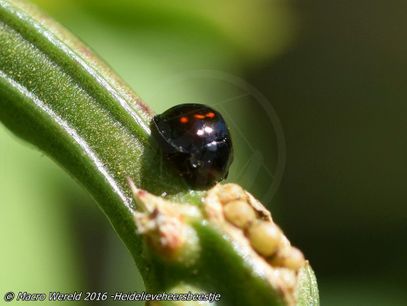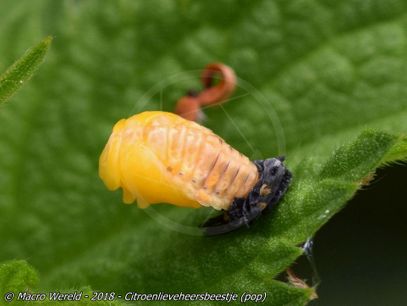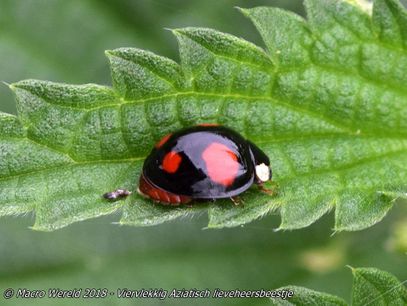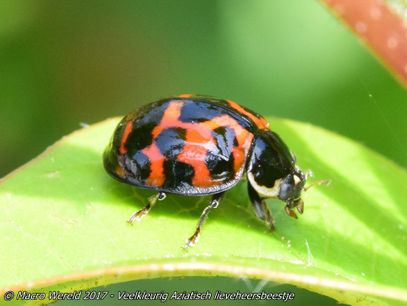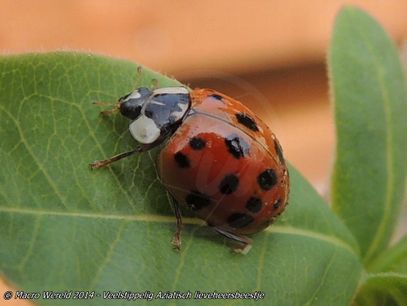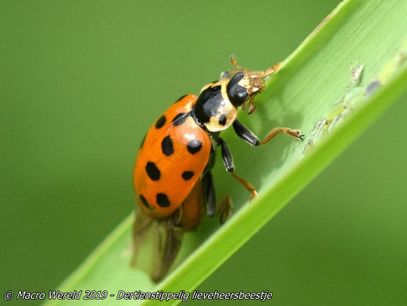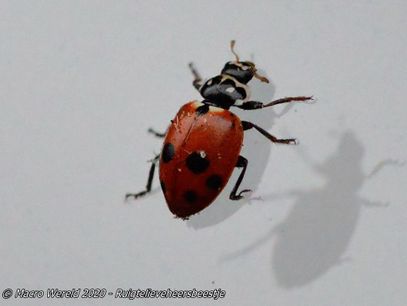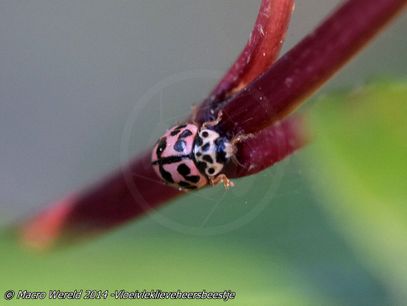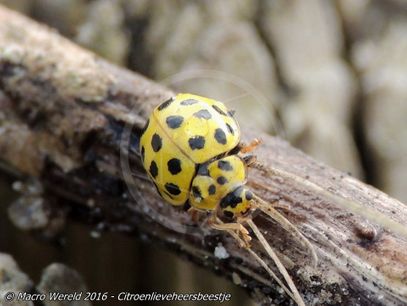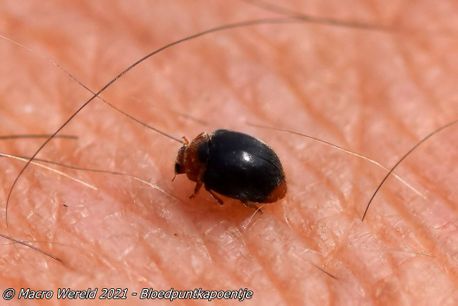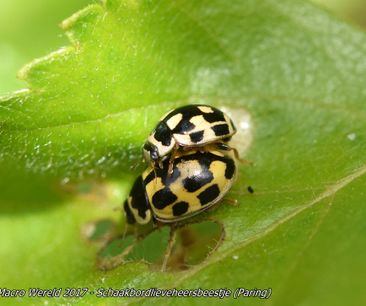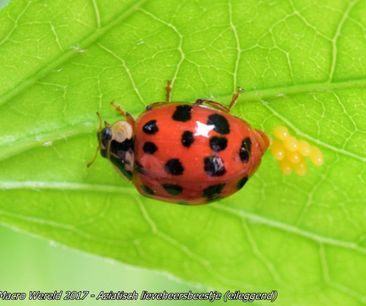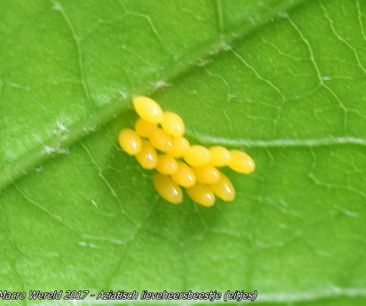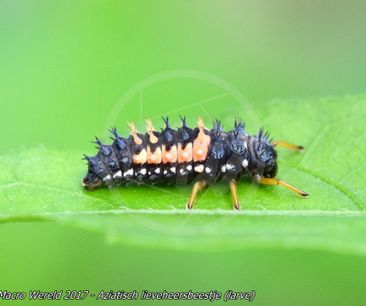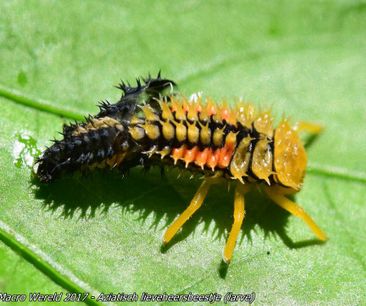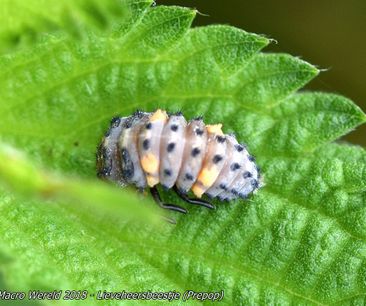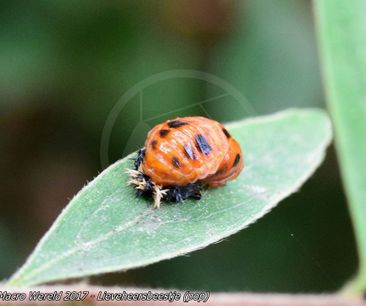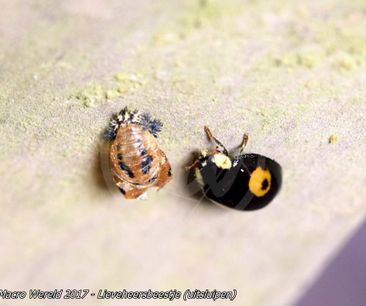Ladybirds
Ladybirds (Coccinellidae) are a seperate family
within the order of beetles.
Ladybugs are a separate family within the order of beetles. Worldwide, more than 6,000 different species have been described, of which 68 have been observed in the Netherlands.
In my opinion this is the most famous beetle species in the Netherlands, as their striking colors and their mischievous appearance appeal to most people.
For me also a reason to devote a separate page to this species.
Most species are fairly easy to determine, just a matter of counting the number of dots.
However, the Multicolored Asian ladybird has several dozen
color variants, which makes identification a bit more difficult.
I recently acquired two booklets devoted to these mischievous creatures, so I hope that identifying the species will be a bit easier in the future.
Below a number of photo's of species that I have observed so far:
The Life Cycle of a Ladybug.
The life cycle of a Ladybug starts with a mating, just like with many animal species. Most species mate in the spring, especially in warm and sunny weather.
The female then deposits the eggs on or under a leaf. The eggs are usually oval in shape and vary in color from pale yellow to
deep orange.
Between 10-50 eggs are laid at a time. During her lifetime, a female can produce between 700-1500 eggs.
On average it takes 4 days for the eggs to hatch, but in changeable weather with significant temperature fluctuations this can vary between 2-10 days.
A small larva develops inside the egg. After the larva has crawled out of the egg, it remains on the egg for the first day and the empty egg shell serves as food.
The young larvae feed on liquid, which they suck from small prey. They usually find these prey animals more by touch than by sight.
The larvae have four growth stages and a molt takes place between these stages, which is necessary because their skin does not grow with you.
When the larva is fully grown, it looks for a good place to molt into a pupa. In the prepop stage, the larva rolls up slowly. At this stage, the larva is most vulnerable, not only to eg parasitic flies, but also to its own congeners.
At the end of this process, the last larval skin bursts and the pupa becomes visible. The beetle develops inside the doll, a process that takes about a week.
After that week, the doll bursts open and the beetle sneaks out. After sneaking out, the beetle looks for a quiet place to let its shields harden and to inflate its wings and let them harden too.
When the wings have hardened, they are stored under the elytra and the beetle explores its environment. Soon after, the beetle can also fly.
Below are a number of pictures, showing the different stages of development of a Ladybug:
